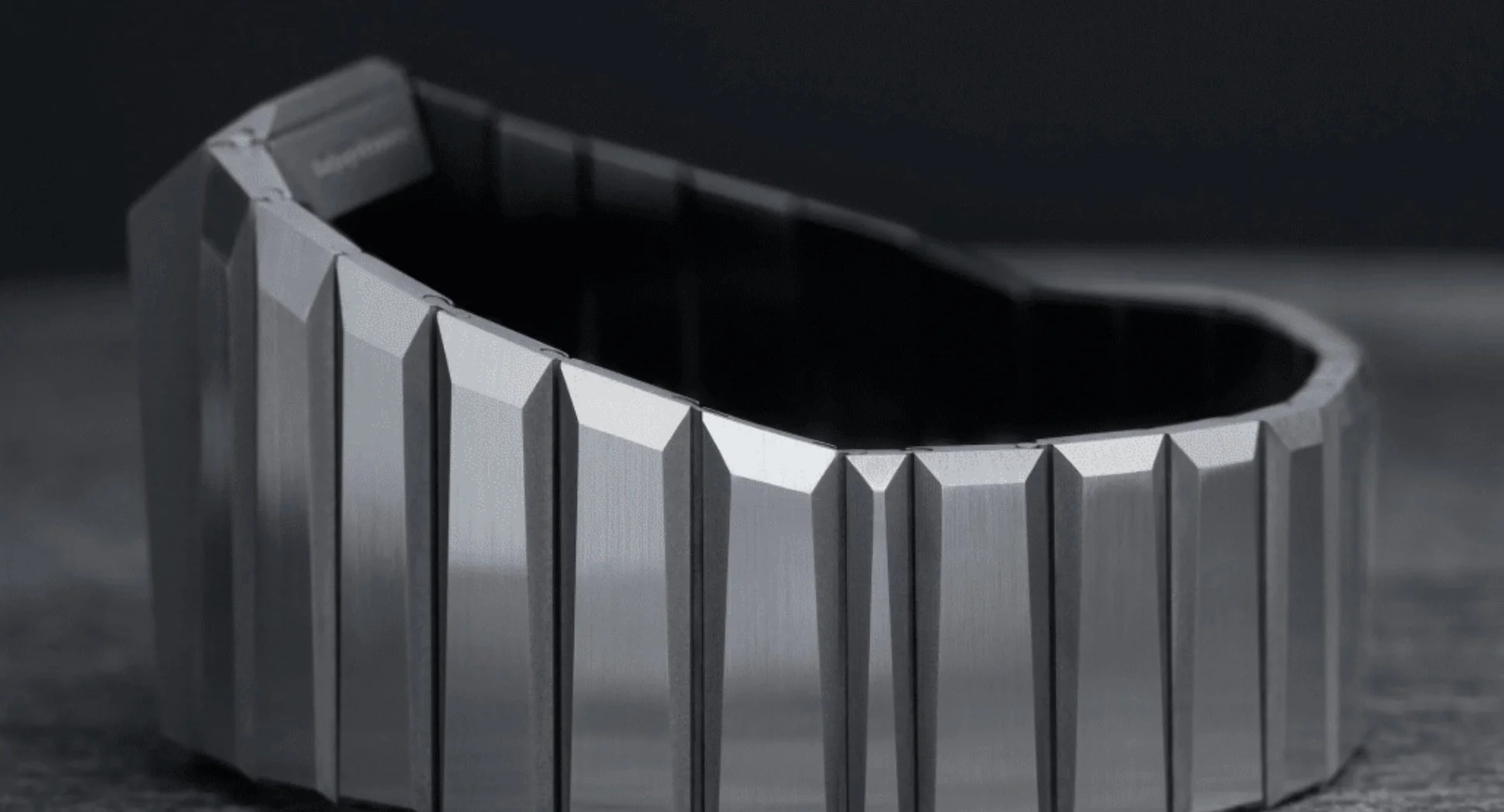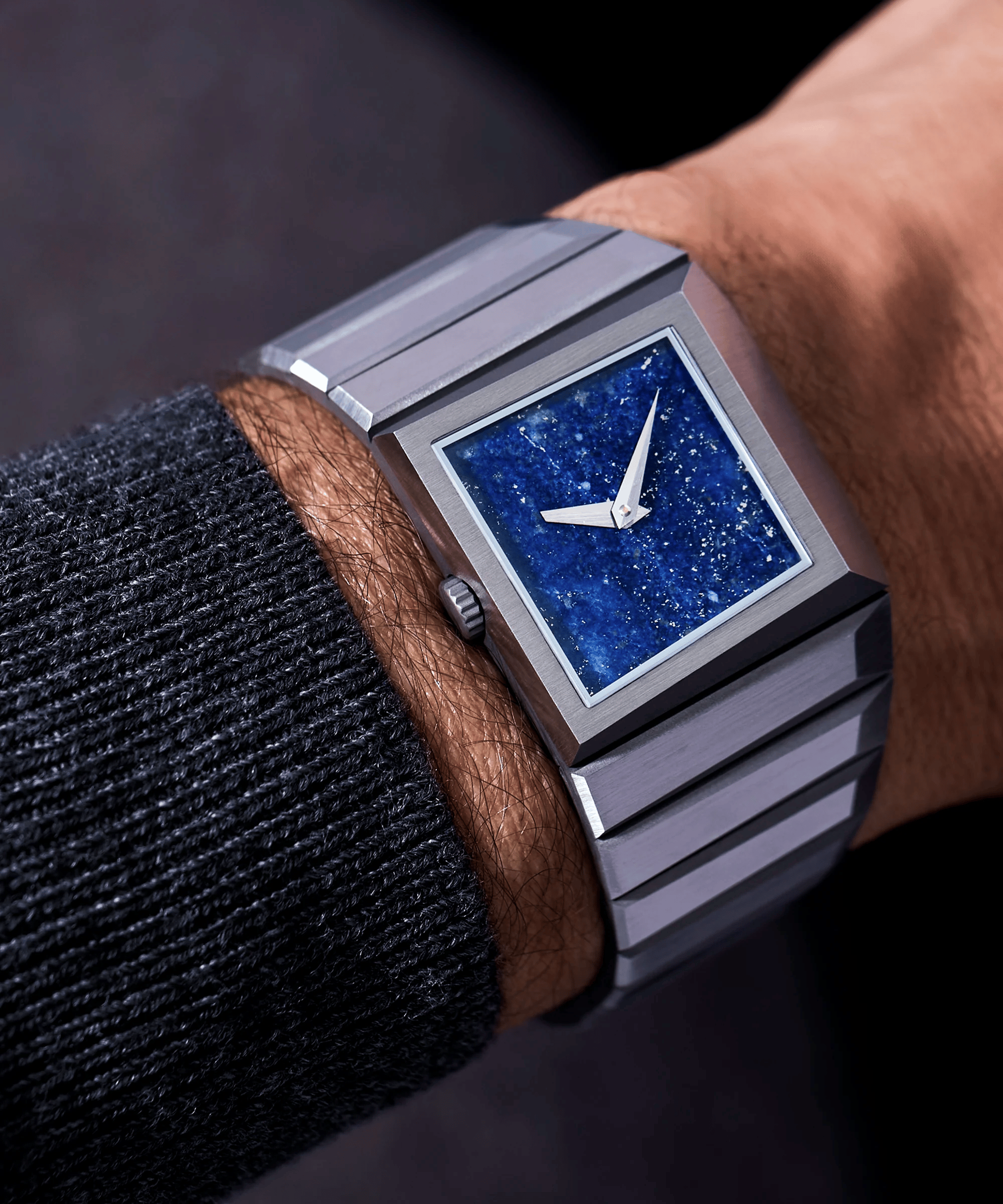The New Wave of Design-Led Watch Brands
Once upon a time, the soul of a watch was found in its movement. A finely finished calibre, Geneva stripes glinting under loupe light, jewels doing their dainty dance — this was the stuff that stirred collectors into poetic trance.
But something’s shifting.
In the past few years, a quiet rebellion has been brewing — one that says the real story isn’t just about what ticks inside. Today, it’s also about how a watch feels on the wrist. How it plays with shape, light, texture. How it makes you pause and think: “I’ve never seen anything like that.”
Enter the design-first watch brand — a new wave of makers less concerned with hairspring heritage, and more focused on challenging the visual language of horology. And honestly? It’s about time. I for one do appreciate the mechanical marvels that movement designers come up with, but as I grow, It’s the design and look of a watch that matters more.
Smaller, independent designs often feel freer, less bound by the restraints that weigh down the big brands. For me, that makes them infinitely more exciting. Sure, there will always be collectors who get their pulse racing at the mention of a new calibre or a silicon hairspring, but that’s not my lane. A watch has to speak to me, and I need to understand the language it’s using. Lately, it feels like I’ve suddenly cracked the code, like I can read the hieroglyphics and finally grasp what these designers are saying.
The Fresh Face of Watch Design: Why Looking Forward Matters More Than Looking Back
Established brands have the luxury of archives — decades, sometimes centuries, of design blueprints to dig through when the creative well runs dry. And let’s be honest, many do just that. Instead of pushing forward, they play it safe, rolling out heritage reissues and vintage rehashes in slightly different sizes or shades. Nostalgia sells, after all.
But while the big names look backwards, the magic — the real creative spark — is happening elsewhere.
It’s the microbrands and independents that are leading the charge. These are the makers with no archives to lean on, and that might be their greatest strength. Rather than recycle the past, they’re looking outward — drawing inspiration from nature, architecture, industrial design, even furniture. A curve in a window, the grain of a wooden table, the silhouette of a pebble — design influence can come from anywhere. And often does.
And you know what? That freedom, that fresh perspective, is exactly what's appealing to a whole new generation of watch enthusiasts.
I wonder if we’re seeing the rise of a different kind of collector — someone who isn’t all that fussed about what movement is under the hood or whether it has a moonphase or a minute repeater. For many, myself included, it’s more about the spark. That moment when you see a watch and something clicks. You’re not dissecting jewel counts or measuring beat rates. You’re just... drawn to it.
Is that shallow? Maybe to some. But to me, it’s just human nature. We’re visual creatures. First impressions matter. If the design doesn’t speak to you, it doesn’t matter how many tourbillons are twirling inside.
That’s not to say movement doesn’t matter — of course it does. But perhaps it’s no longer the main thing. For many of us, the joy of collecting isn’t about reverence for tradition — it’s about expression, discovery, and finding something that feels different.
And that, in 2025, is exactly what the independents are offering.
The Minimalists with a Maximalist Impact
Some of the names leading the charge are Toledano & Chan, Anoma — both relative newcomers, but already drawing admiration (and a few bemused looks) from the traditional guard.
Toledano & Chan, founded by Phil Toledano and Alfred Chan, is perhaps the best example of what happens when the discipline of architectural design collides with horology. Their debut piece, the B/1, is a brutalist slab of brushed steel and sapphire. No lugs. No curves. Just bold geometry and stark symmetry — unapologetically architectural. It's less a watch and more a wrist-mounted monument.
Functionally? Sure, it tells the time. But the B/1 and B/1.2 don’t exist to impress movement nerds. Inside ticks a humble Sellita — reliable, unglamorous, serviceable. What matters here is how the watch feels as an object. After all, its a piece of wearable sculpture, that just happens to tell the time
Then there’s Anoma, a brand that feels like it was born in a Bauhaus studio, raised in a design museum, and now lives on the wrists of the aesthetically enlightened. Their A1 model plays with contours in a way that’s genuinely original. Its pebble like case, feels like more than something for time telling. The soft edges and smooth finish, make it so tactile. Hypnotic. Totally unnecessary. And utterly compelling.
Again, it’s quartz-powered. And again, nobody seems to care. Because the joy comes not from peering through a caseback, but from running your fingers over those soft edgesand admiring how something so simple — a trianlge on a strap — can feel so new.
Even the design of the new Anemoic Versailles has that unmistakable freshness. Just a simple shift in perspective — viewing time through a coloured prismatic crystal — completely transforms the experience. It’s clever. It’s unexpected. And it works.
This is what sets these new-wave designers apart. They're not bound by heritage or trapped in the amber of tradition. They’re turning the page and bringing to market some of the best-looking watches we've seen in years. Watches that make you look twice — and then look again, just to figure out how they’re doing what they’re doing.
A Shift in Priorities
Let’s be clear — this isn’t about rejecting traditional watchmaking. It’s about rebalancing the equation. Movements matter, of course they do. But for this new crop of collectors (many of whom cut their design teeth on sneakers, architecture, or product design), it’s the object as a whole that matters most. The interplay of form and function. The idea, not just the execution.
Where once the height of cool was a vintage Valjoux chronograph, now it might just be a £600 slab of steel with no indices and a Miyota inside — but designed with intent, coherence, and creativity.
There’s something freeing about that. In a world where watch forums still rank timepieces by the number of internal components, it’s refreshing to see brands say, “What if we just made something... beautiful?”
Less Movement More Meaning
Ironically, for watches that don't worship at the altar of the calibre, these design-first pieces are creating movement in the industry. They're attracting younger collectors, design enthusiasts, and even folks who never thought they’d wear a mechanical anything. They're broadening the conversation around what watches can be — and who they're for.
And let’s be honest, it’s also a bit of a relief to buy a watch and not have to pretend you’re going to time laps at Le Mans or survive the Mariana Trench. Sometimes, a watch can just be cool.
Final Thoughts
As traditional brands lean ever harder into heritage reissues and vintage revivals, this new generation is sprinting in the opposite direction — embracing minimalism, modernity, and a kind of aesthetic bravery that horology sorely needs.
So, next time someone asks you what movement’s in your new watch, feel free to shrug. Then hold it up to the light and say, “Look at this.” Because in 2025, it’s the case and overal look thats hitting the mark.









